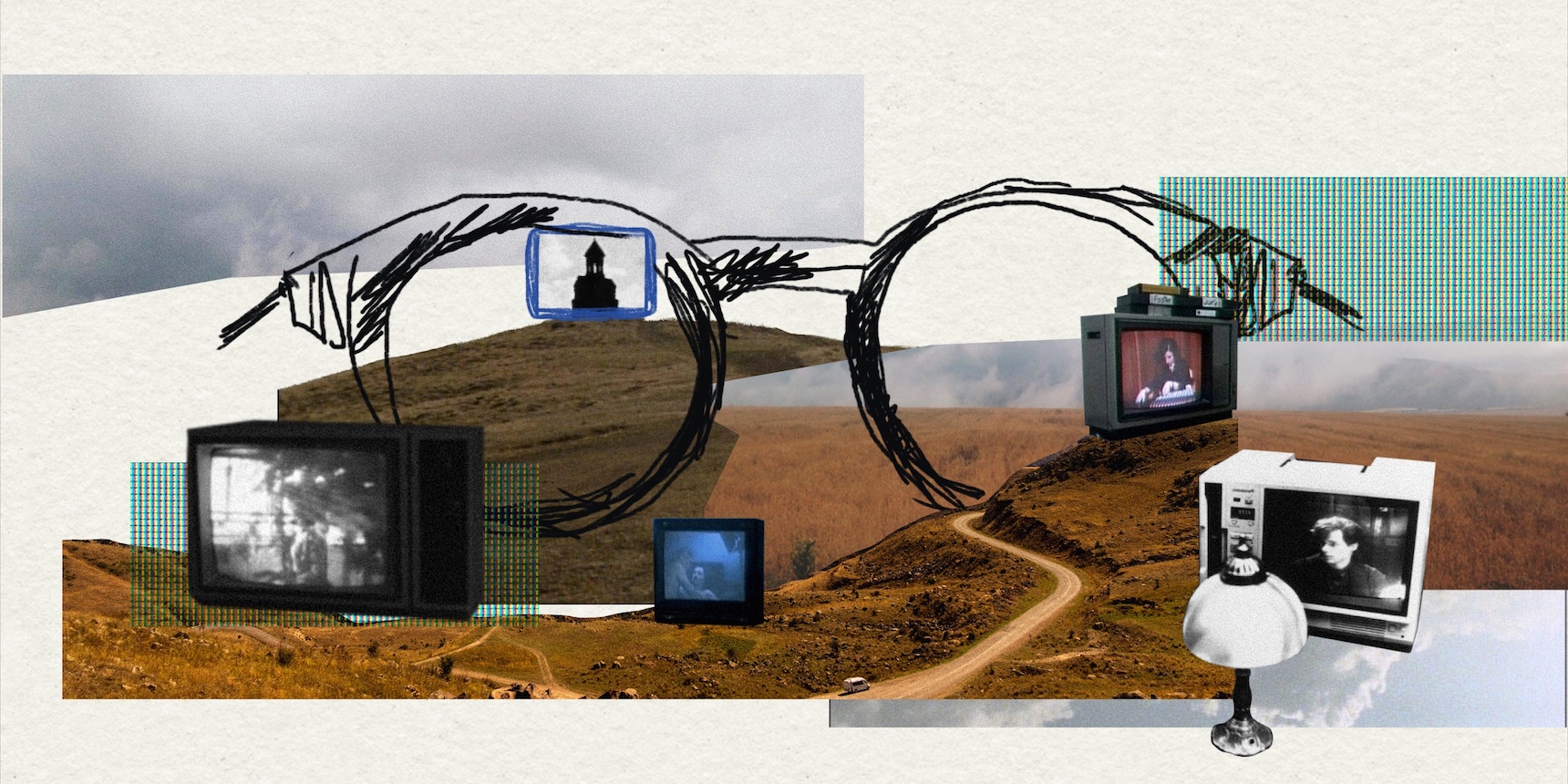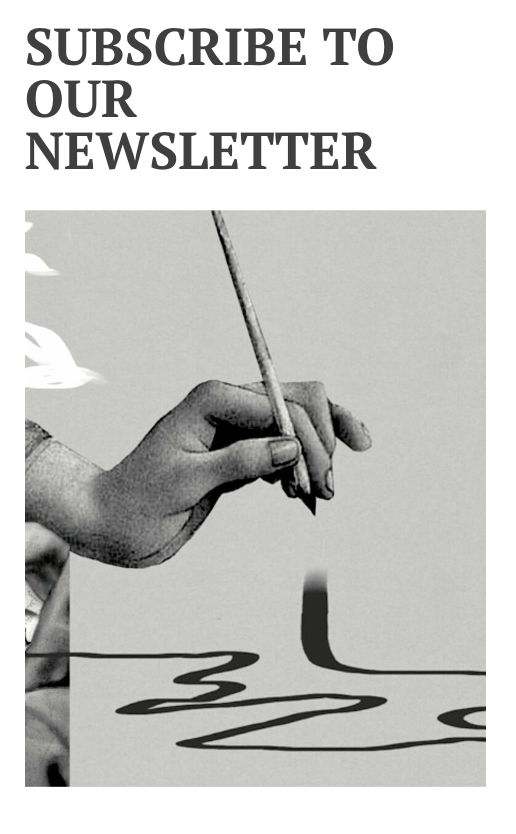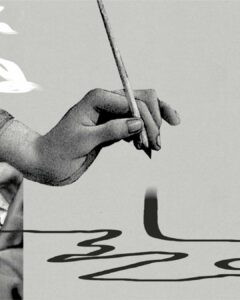

What does it mean to be an immigrant? Is a second or third-generation immigrant still a foreigner? Is the feeling of nostalgia, the search for home, and the longing for a lost homeland an innate pull on an instinctive and genetic level? Or is it an artificial construct — something that’s imposed?
Peter Foster, the protagonist of Atom Egoyan’s 1984 debut feature film, “Next of Kin”, unintentionally becomes a witness to a video therapy session of an Armenian family, almost by accident. Being aware of their secret that, years ago, upon arriving in Canada, the couple had to give up their child for adoption due to a difficult situation, Peter decides to assume the role of their “lost” son. From the moment he meets this “fake” family, everything changes. Through this connection with this fictitious family and their historical and cultural roots, he undergoes his own transformation. Peter becomes Bedros, and he finds meaning and purpose in life. The “father” and “mother” accept him without hesitation, never questioning his true identity. Maybe they, too, have subconsciously accepted the rules of the game and pretend as well, unable to resist the charm of a sweet lie.
Peter’s character embodies a combination of self-denial and his longing for self-discovery. In his quest for self-recognition, he reincarnates someone else and wears a stranger’s mask. This character arc can be paralleled with Egoyan’s directing style and the structure of his films. Just as the themes of immigration and alienation, the constant interplay between reality and illusion, with references to a film within the film, an image within the image, hold vital significance in the author’s journey towards self-discovery and self-establishment.
The authenticity of the picture is questioned, leading to the memory becoming a fake imitation. In later films, the very essence of Egoyan’s cinema is obscured by layers of erotic-detective or psycho-noir genres. The plot is deliberately complex, introducing strange side characters, and creating a mysterious atmosphere that slowly builds tension.
Throughout the process, Egoyan also uses various formats such as tape film, video, and digital imaging. The protagonists of his early films represent a Mcluhanian future, being children of a TV generation whose perception of reality is shaped by the influence of alienating video and television media.[1] They are young rebels with a big goal, like establishing a connection with their ancestors’ homeland, even if their purpose is deceptive, based on a complete lie, as seen in the case of Peter-Bedros.
It is on video that Peter first sees his future “family.” In Egoyan’s second film, “Family Viewing” (1987), the rediscovery of a home video sets off the hero, Van, on a journey to return to his roots. In the film “Open House”, Mr. Odaryan is locked in a dark room, constantly viewing film strips of family photos. The endless session is punctuated by recordings of words of praise for the “prison-chamber” that he hand-built with his father, turning his experience into a myth. It is unclear whether the memory is based on recalling one’s own past or the photo or video images that captured it. In “The Adjuster” (1991), photographs serve as evidence for compensation for burnt property. As the film’s protagonist says, “A photograph helps start the process of recollection.” Following that logic, the best way to move on from the shadows of the past is to destroy a photograph. Rose Sarkissian’s character in the film constantly burns evidence from her previous life: photographs of Beirut’s Armenian neighborhood sent by her brother who remained in Lebanon.
The new homeland seems to be trying to erase history, to completely subjugate the person, and force them to forget their connection to anything else. This is how Stan, the protagonist of “Family Viewing”, forces his son Van into renouncing his Armenian heritage. Stan sends his grandmother, who symbolizes the distant homeland, to a nursing home. He records sexual encounters with his “new wife” over family home videos. But these actions ultimately lead to his son’s rebellion (the name Van also carries symbolic significance in this sense). The young man sees his childhood in the preserved video tapes: his mother and grandmother talking in the park, and a young Van speaking and singing in Armenian. His father disrupts this utopian image by forcing Van to switch to English, oppressing and controlling his son.
The lack of communication, so characteristic of modernist cinema, takes on an ethno-cultural aspect in this context. The relations between families are hindered not only by the typical generational issues but also by the matter of national self-identification/self-discovery. Van is compelled to embark on a journey of self-awareness. The importance of not losing his Armenian identity or more precisely, rediscovering it, becomes tantamount to the struggle for independence.
If immigration is the central theme in the films “Next of Kin” and “Family Viewing”, then in “The Adjuster”, the immigrant experience is pushed to the background. The characters’ nationality is not clearly defined, and instead, the issues of belonging or rootlessness acquire transcultural characteristics. All of them are, in one way or another, refugees.
While a Puy-Puy Mouse singing toy may hold a specific semantic-associative meaning for the Armenian audience, for the international audience, it acts as an element that creates a mischievous-comical atmosphere in the film. Meanwhile, “The Adjuster” explores issues relating to alienation, confusion and assimilation. The protagonist, a representative of an insurance company, works with people affected by fires and deals with the inventory of destroyed property. He provides accommodation for the homeless in a motel, forming a unique commune of refugees. Additionally, he lives with an Armenian woman, her son, and her sister.
The essence of the film “The Sweet Hereafter” (1997), which has nothing to do with immigration, is expressed through the legend of the Pied Piper of Hamelin. Similar to the crippled boy who survived by staying behind, being unable to follow the children enchanted by the magical flute, the young girl who survives the school bus accident struggles to find her place in this world. She perceives her survival as punishment, experiencing survivor’s guilt similar to that of a genocide or war survivor. The alienation and estrangement experienced by Egoyan’s protagonists are evident at both the visual and symbolic level. These characters all feel out of place and are in search of a mythical homeland or self. The places they inhabit have no resemblance to the concept of home.
The adjuster’s family lives in a showcase house in an undeveloped neighborhood. The walls of Van’s house radiate a cold white color, reminiscent of a futuristic office space or a gallery from the past. Even the rented apartment, hotel room, and common room in the nursing home feel more inviting and comfortable compared to the young man’s oppressive and claustrophobic home.
Even the books in the adjuster’s house are fake. In the film, “Next of Kin”, Peter plays an invisible guitar while Isaac Albeniz’s “Asturias” blares from the speakers. All the home scenes in “Family Viewing” are shot in the television genre, creating an unnatural setting reminiscent of a sitcom. But when the characters leave their place of residence, everything changes. The world becomes real and the sitcom image turns into a film, gaining depth, and becoming multicolor. The guitar materializes and the recorded music is replaced by a live performance.
Music holds great importance in Egoyan’s films. The director himself has a background in musical education and has even composed and performed guitar pieces in his early films, and now regularly stages operas. The music in Egoyan’s films serves to unify fragmented plot elements, aligning with the mosaic and multi-content storytelling approach. The film scores, composed by Michael Denna, blend Eastern and Western cultures, incorporating traditional instrumentation from around the world.
During the 1980s and 1990s, the use of the World Music genre became widespread in American and European films. When the script moved beyond the U.S. or Europe, exotic folk music arrangements, often of Oriental origin, would be introduced. This was a way to present people from distant lands as exotic, portraying their customs and peculiarities from a colonial worldview.
In Egoyan’s films, this method serves a different purpose. Reality deviates slightly, and the music is both alien and familiar. Like the behavior and worldview of Egoyan’s stars, it is contradictory and uncertain. The perfect harmony of unique sounds creates an unreal, unnatural atmosphere. Emphasis is put on the feeling of alienation: people cannot find their place, everything is happening as if in a dream.
In the film “Exotica” (1994), strange scenes in a nightclub slow down the pace of life, influencing the passage of time. In “The Sweet Hereafter”, medieval Western European instrumentation is combined with Asian brass sounds, giving the film a timeless and spatial character. This solemn melody sounds like it is from another world; perhaps the underworld?
Egoyan’s two most “Armenian” films — “Calendar” (1993) and “Ararat” (2002) — counteract the illusory and apparent nature of his cinema, where the presence of the mysterious homeland becomes tangible and material. Armenia is no longer just a ghost and promised land of the past. History becomes incarnated, and the myth materializes.
Et Cetera
The Unsettled Frame: The Quiet Politics of Hagop Hagopian’s Art
Through his art, Hagop Hagopian was changing the lens on the idea of Armenia as a mythical topos, an atavistic construct of the Armenian paradise. Instead he presented a land of extreme harshness and desolation in which life can happen only as a product of tremendous effort and unconditional belief.
Read moreHeadfirst Into the Rabbit Hole: An Ode to Cultural Anxiety
Self-pity and victimhood have served as comfortable escape routes from pervasive issues, however, in the current post-war reality there are clear signs that there is a desire to address the fault lines, to understand and rethink the reasons behind past failures, to stop and reflect.
Read moreExhibiting “Armenian” Nudity: A Decolonial Approach to Art History
A recent exhibition “The Guises of the Nude: Perceptions of Nudity in Armenian Graphic Arts” provided a powerful opportunity to challenge prevailing meta-narratives and foster a self-reflective dialogue that can contribute to the broader project of decolonization and social transformation.
Read moreThe Regional Policies of the Cannes Film Festival
Major film festivals don’t only showcase films for local and international cinephiles, they also create opportunities for unknown stories, names and voices to be heard. Sona Karapoghosyan writes about how the Cannes Film Festival is trying to tell the stories of everyone, not only ones from the West.
Read more





